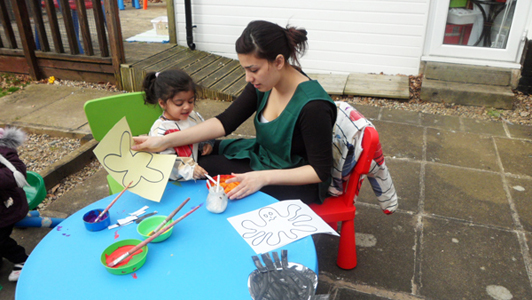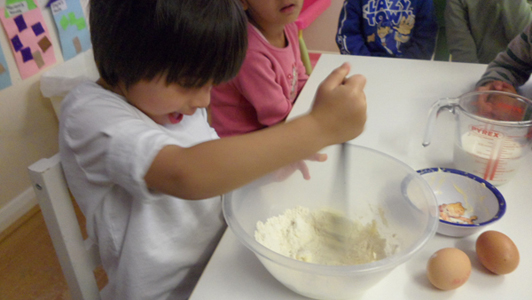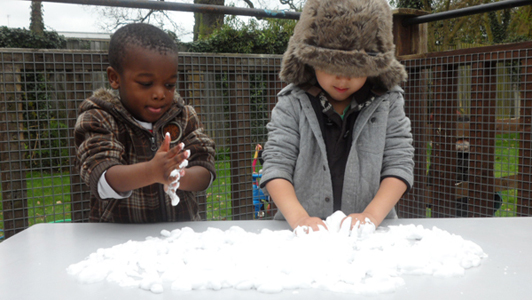

The Learning Ladybirds Room
Pre-school Learning and Development
An increased interest in joint play such as make-believe, construction and games helps children to learn the important social skills of sharing and co-operating. Children also learn about helping adults in everyday activities and finding a balance between independence and complying with the wishes of others.


Children still need the comfort and security of special people. Close, warm relationships with carers form the basis for much learning, such as encouraging children to make healthy choices in food and exercise.


At this stage children are becoming more aware of their place in a community. Literacy and numeracy can develop rapidly with the support of a wide range of interesting materials and activities. Children's language is now much more complex, as many become adept at using longer sentences. Conversations with adults become a more important source of information, guidance and reassurance.

Little Footprints Learning Environment
The indoor spaces are age appropriate and planned by the practitioners to allow flexibility by the children in the Learning Ladybirds as they follow their own child focused learning approach across all six areas of learning. The outdoors gives the Learning Ladybirds first hand contact with weather, seasons and the natural world.
The activities and resources in this age group reflect the following themes:
- Large and Small Movement Resources: To enhance and improve the children's co-ordination, control, manipulation and movement skills.
- Sand and Water Play: To explore sand and water capabilities and quantities through scientific, mathematical and imaginary, sensory and manipulative experiences.
- Messy Play: To explore a range of materials, tools and medias to develop a child's imagination, understanding, manipulation, control and spontaneous expression and creativity.
- Book area: To develop early reading skills, handling books, retelling stories, listening skills, discussion skills and love of books.
- Construction Area: To join, build and balance with a variety of construction materials, sometimes building with a purpose in mind.
- Role Play and Small World Areas: To use available resources to re-enact children's own life experiences, interacting with others and developing social skills as they do so.
- Language Resources: Using language games and resources to focus in on the children's language skills. In this area the children also explore with mark making and emergent writing to communicate.
- Problem Solving, Reasoning and Numeracy Activities: Resources are available to allow for children's mathematical development as they seek patterns, make connections and recognise relationships through finding out about and working with numbers and counting, with sorting and matching and with shape, space and measures.




